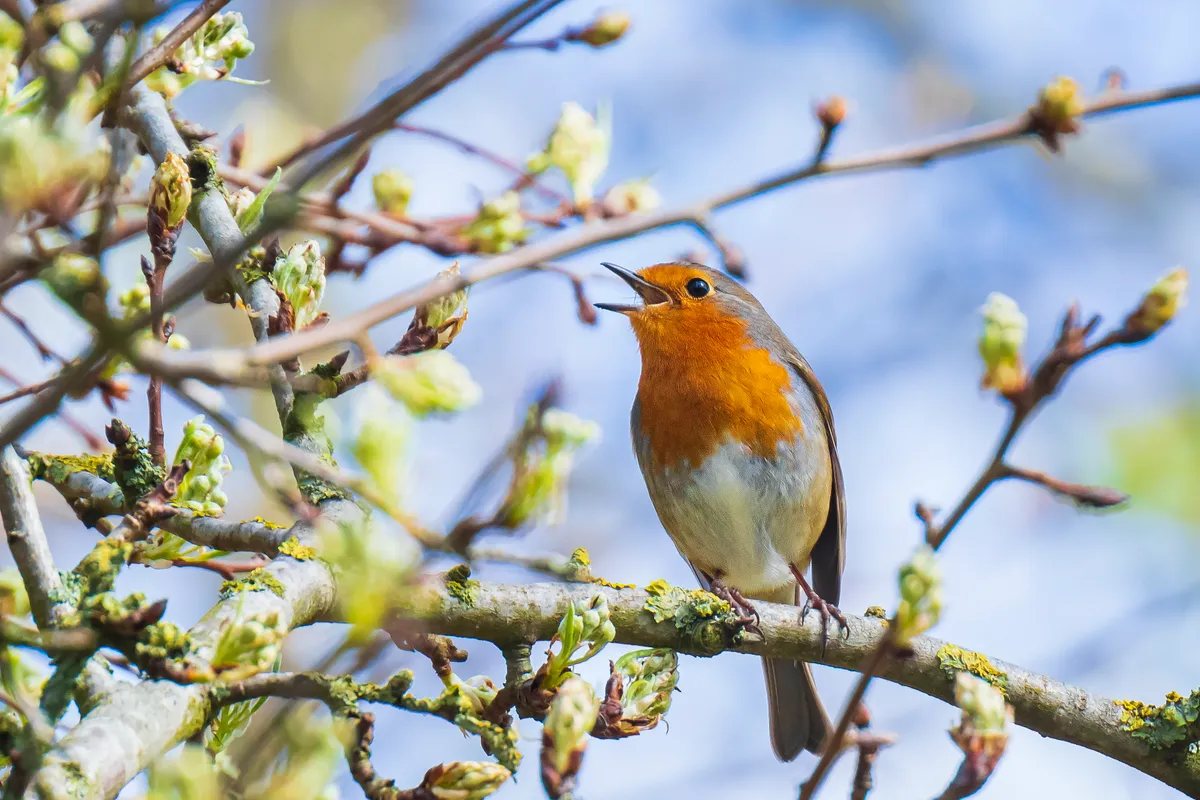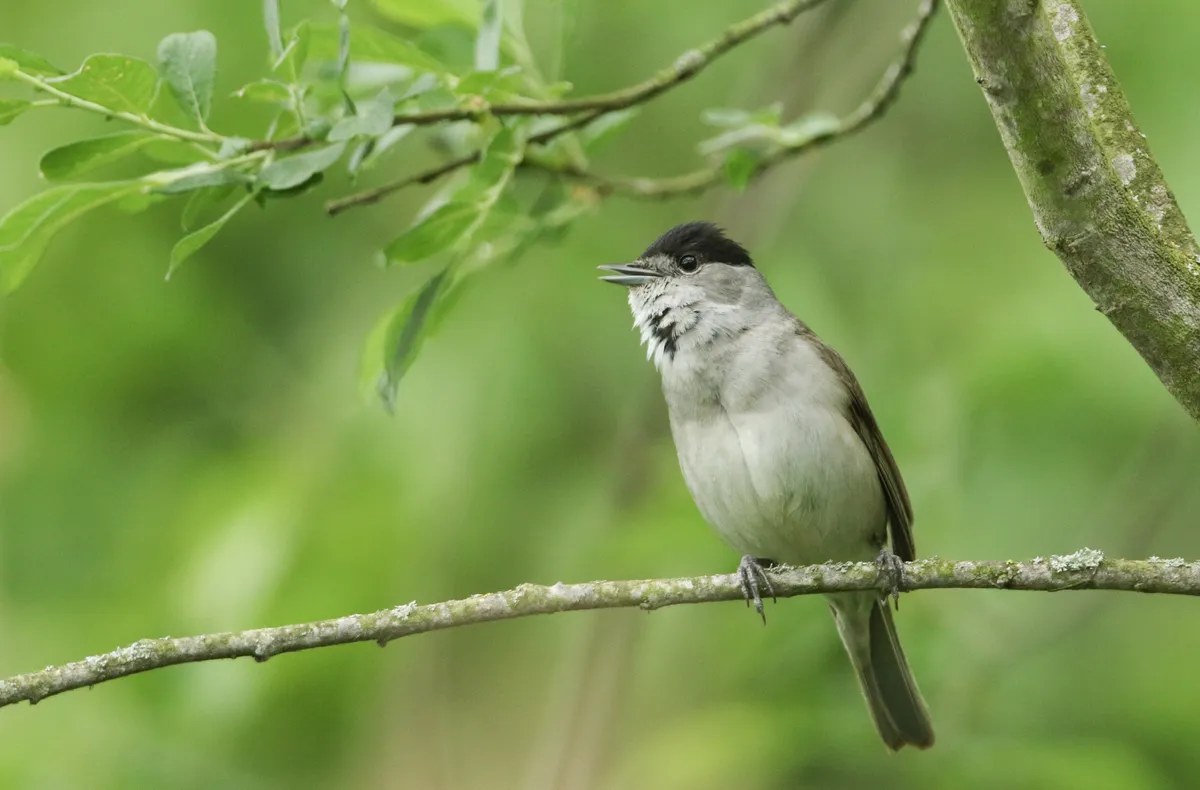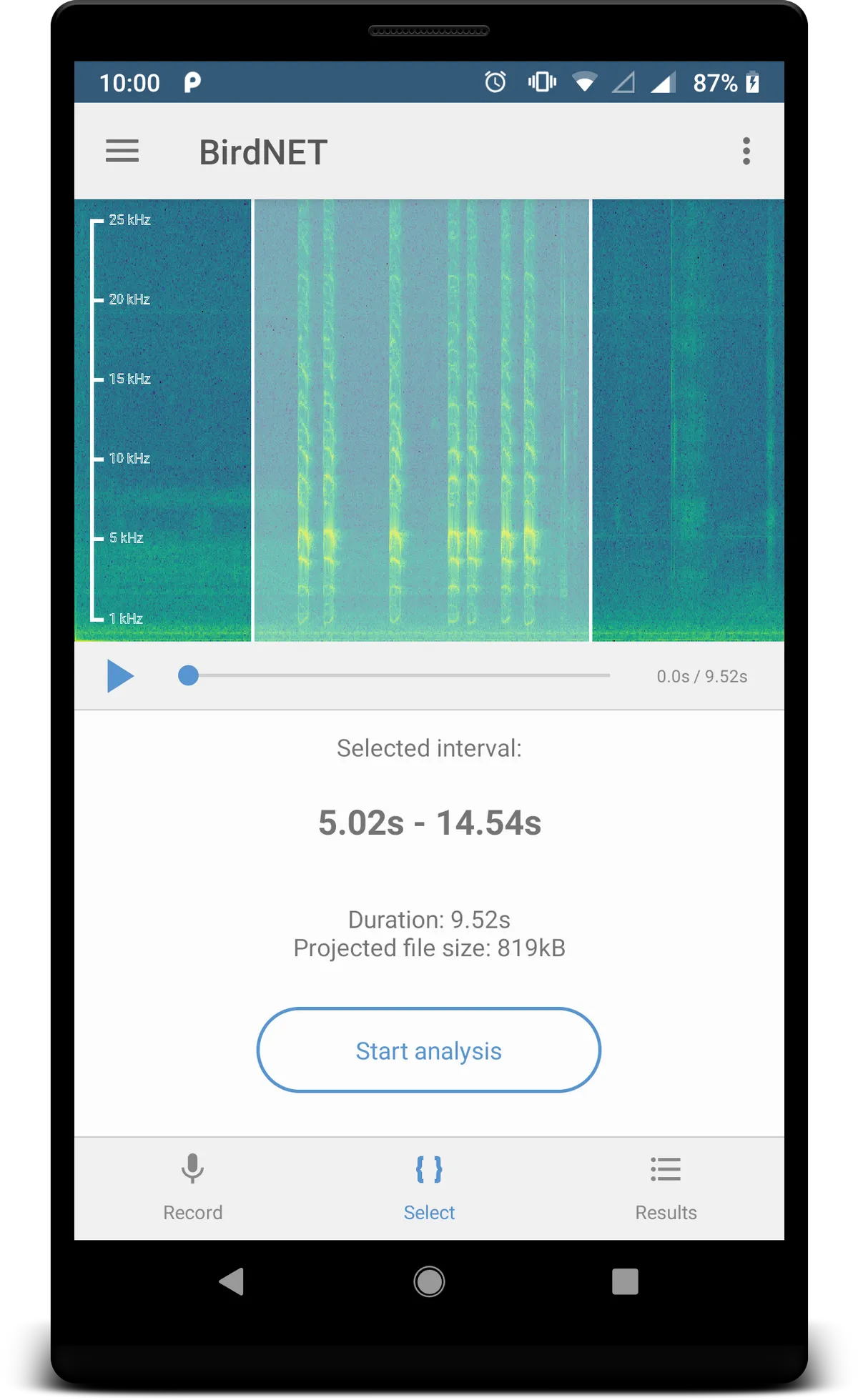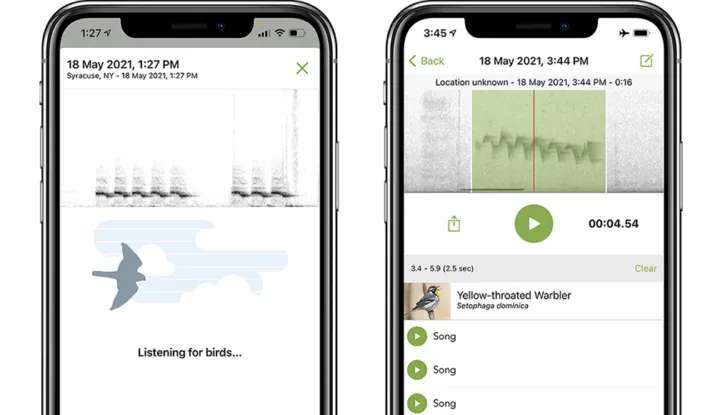Being in a wood on a summer morning can be a daunting experience for any birder. The trees are thick with foliage and the birds largely invisible, but all around is a bewildering wall of sound. It can be difficult to pick out individual songs and calls, let alone to work out the species responsible.
When it’s a struggle, my solution is to throw back my head, shut my eyes and simply enjoy the natural orchestra.
The difference between bird song and bird calls
Birds make two basic types of noises: contact calls, which include alarm calls, and songs, a more complex series of notes. Contact calls tend to be short sounds that, in certain small birds, are frustratingly similar.
Alarm calls, by their very nature, are harsh and loud. They include the explosive chattering of blackbirds and the churring of blue tits. Listen out for these avian warnings, especially if you are in a wood, because they could lead you to a roosting tawny owl.

Songs, by contrast, are all about attracting mates and staking out territory, and the best time to enjoy them is dawn. Memorise the song of your favourite species – say, the greenfinch’s wheeze – then go to your local patch and chart where different individuals are singing, marking out their territories.
Can different bird species understand each other's calls?
Not exactly, but they can learn the meanings of unfamiliar calls through ‘translators’. Birds call and sing to communicate
with potential mates or rivals within their own species, but don’t automatically understand the vocalisations of others.
However, sometimes there’s a good reason to overcome this language barrier, such as ganging up on a predator. Groups of small birds will often harass a threat, such as a bird of prey, with the aim of bothering it enough that it moves on – but how do the birds know when someone else wants to join forces?
Research on wood warblers has shown that they don’t instinctively understand when an unfamiliar species is giving the alarm call that ‘a predator is here’, but once they have been part of a mixed mobbing flock, and have associated the unfamiliar calls with the alarm calls of familiar species, they will start to recognise the unknown call as being a predator warning.
This Q&A originally appeared in BBC Wildlife Magazine, and was answered by Kate Risely.
How to identify bird song
Bird songs differ greatly in their construction and volume. Bullfinches have a barely audible, simple string of notes, while blackbirds, blackcaps and nightingales produce rich, evocative arias. Wrens emit strident bursts, and song thrushes repeat a loud and vibrant three-note refrain. Great tits have a huge repertoire: it’s often said that if you hear an unfamiliar call, it’s bound to be one of them!

Someone I play football with once brought me a recording of “a mechanical noise” that he heard in his garden. It turned out to be a chiffchaff, and he has developed such an affinity for the tiny sprite that he has a painting of one hanging in his living room.
Load up common bird songs and calls on your smartphone and, while travelling to and from work, familiarise yourself with ten species that live in your area.
Learning bird song and bird calls with other people:
One of the best ways to learn bird song and bird calls is to go on walks with naturalists, who can point out birds and the sounds they're making. If you have friends who are birders, head out with them. But if not, don't worry, there are plenty of walks and training courses being held around the country.
Check out the events listings for the RSPB, Wildlife Trusts, and National Trust and National Trust for Scotland properties, as well as local natural history and ornithological societies.
For in-depth courses, take a look at the websites of the BTO and the Field Studies Council.
Apps for learning and identifying bird song and bird calls:
BirdNET

This is a free app created by The Cornell Lab of Ornithology and the Chemnitz University of Technology, it currently features almost 1,000 of the most common species in North America and Europe, and is a citizen science platform.
When you hear a bird song you don't recognise, record it in the app, and an artificial neural network will identify the most likely bird, based on the sound, location and date, and tells you how certain it is of its identification.
Available on Android and iOS.
Merlin Bird ID

The Sound ID part of this free app allows you to record songs and calls in the app, and will then identify which species you are listening to. It's currently only available for over 450 birds in the US and Canada, though the website says that more species and regions are coming soon.
Merlin Bird ID is an identification app powered by eBird, part of The Cornell Lab of Ornithology, and also enables you to build lists.
Available on Android and iOS.
YouTube playlists for learning and identifying bird song and bird calls:
#BirdSongBasics
This playlist has been put together by the British Trust for Ornithology (BTO) to help you learn bird song. It begun at the start of the coronavirus pandemic, when we all noticed bird song a bit more, and to encourage people to take part in International Dawn Chorus Day.
The videos compare similar species, e.g. blue tit and great tit, or collared dove and woodpigeon, pointing what to listen out for with each. There are also quizzes as well as some Mindful Minutes.
Learn more about birds in the UK in these guides by the BTO:
Birdsong Lessons with Lucy Lapwing
Naturalist Lucy Lapwing shares her top tips for learning bird song, focussing on a different species in each video including mistle thrush, chaffinch and robin.
Lucy's guide to bird song was featured on BBC Radio 3 Breakfast, and on their website.
David Lindo is a birder, broadcaster, writer, naturalist, photographer, public speaker, and tour leader. His mission is to engage city folk around the world with the environment through the medium of birds.
During the coronavirus pandemic, he set up In Conservation With…, a series of Zoom interviews with some of the leading figures in the natural history sector.
Main image: David Lindo listening for bird song. © Russell F Spencer

